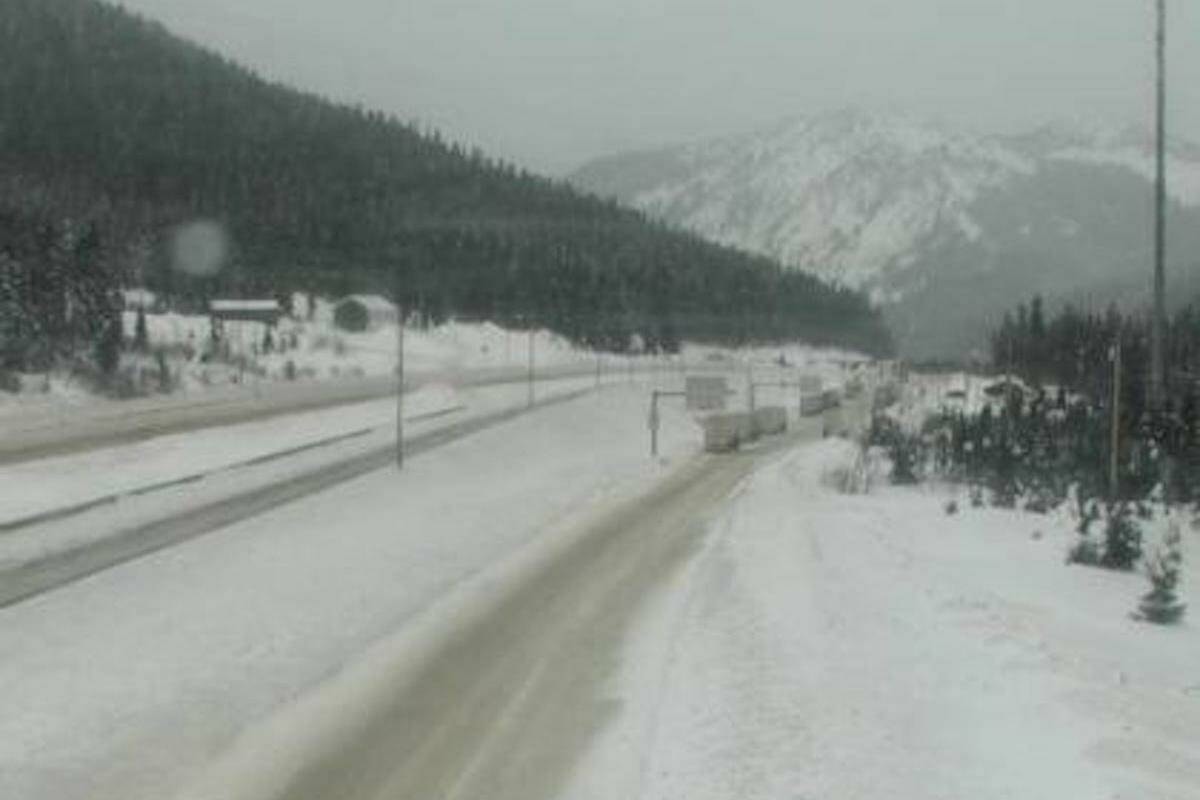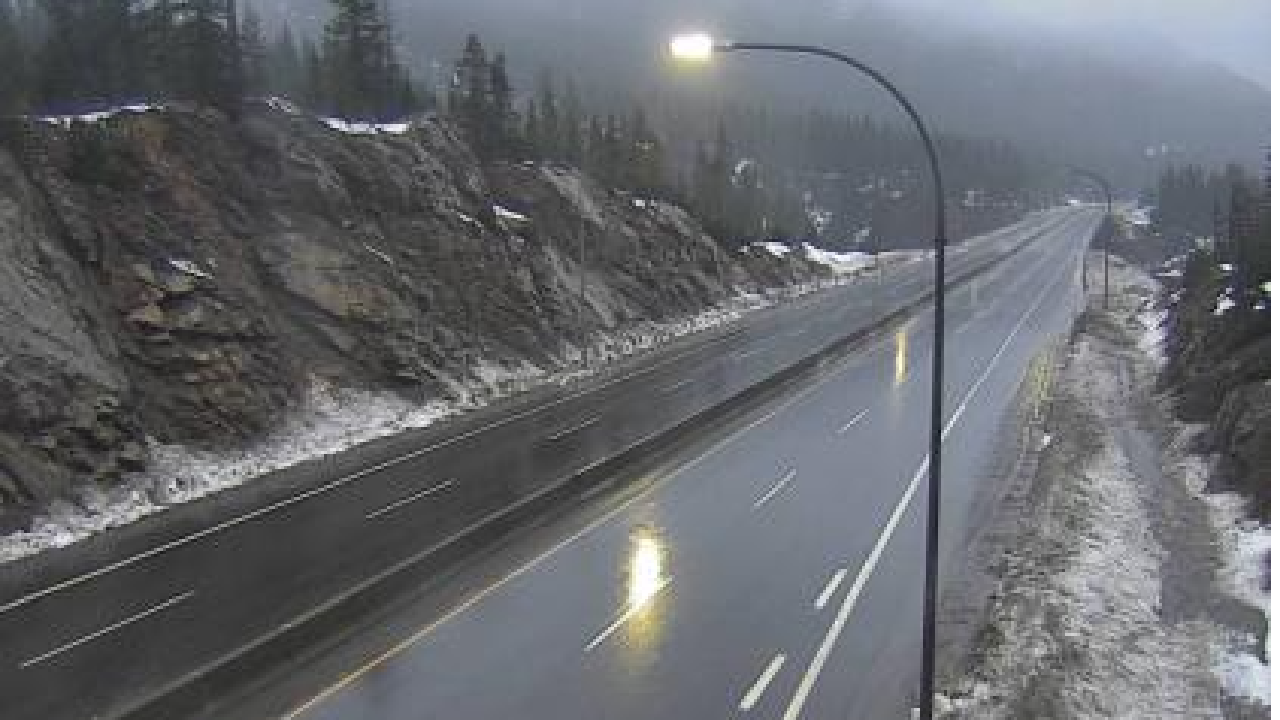Coquihalla weather camera feeds offer invaluable real-time insights into conditions along this challenging mountain highway. Drivers, transportation companies, and weather enthusiasts rely on these images to make informed decisions, ensuring safer travel and efficient operations. The cameras provide a visual representation of snowfall, visibility, and road conditions, significantly improving upon traditional weather forecasts and static reports. This detailed look into the Coquihalla weather camera system explores its functionality, impact, and future potential.
From the strategic placement of cameras along the highway’s various stretches to the technological advancements driving image clarity and transmission, we delve into the multifaceted role these cameras play. We’ll also compare their effectiveness against other weather reporting methods, highlighting the unique benefits they offer for navigating the unpredictable Coquihalla Highway.
Coquihalla Highway Weather Cameras: A Vital Resource for Drivers: Coquihalla Weather Camera
The Coquihalla Highway, a major transportation artery in British Columbia, Canada, is renowned for its stunning scenery and challenging weather conditions. Real-time weather information is crucial for safe and efficient travel along this mountainous route. This article explores the role of weather cameras in providing this vital information, examining their functionality, accessibility, impact on drivers, and technological aspects.
Coquihalla Highway Overview, Coquihalla weather camera

The Coquihalla Highway (Highway 5) traverses a rugged and mountainous landscape, characterized by steep grades, winding roads, and unpredictable weather patterns. Its elevation ranges significantly, exposing it to diverse climatic conditions. Throughout the year, the highway experiences a wide range of weather phenomena, from heavy snowfall and icy conditions in winter to intense heat and potential wildfires in summer.
Monitoring the Coquihalla Highway’s weather conditions is crucial for safe travel, often relying on strategically placed cameras. Understanding the impact of weather on transportation infrastructure also extends to the advancements in aerial technology, such as those developed by archer aviation , whose drones could potentially enhance real-time weather data collection for remote areas like the Coquihalla, improving road safety and providing more comprehensive weather information from various perspectives.
Rain, fog, and strong winds are also common occurrences, especially during the transitional seasons. Accurate and timely weather information is paramount for driver safety and efficient transportation management.
Staying informed about Coquihalla Highway conditions is crucial for safe travel, especially during winter. Real-time updates are readily available through various resources, and a particularly helpful tool is the live feed from a dedicated coquihalla weather camera. This camera provides a visual representation of current weather, allowing drivers to make informed decisions about their journey. Checking this camera before embarking on a trip along the Coquihalla can significantly improve travel safety and planning.
Functionality of Weather Cameras

Coquihalla weather cameras function by capturing real-time images of the highway and surrounding environment. These images are then transmitted digitally via high-speed internet connections to online platforms, making them readily accessible to the public. The cameras utilize high-resolution sensors to capture clear images, even in low-light conditions. Images provide valuable information including snow accumulation depth, visibility levels (fog, snow), road surface conditions (icy patches, snowpack), and general weather patterns (e.g., rain, wind).
Compared to traditional weather stations and forecasts, which provide broader, less localized data, weather cameras offer highly specific, real-time visual information about the immediate conditions on the highway itself.
Location and Accessibility of Cameras

Weather cameras are strategically positioned along the Coquihalla Highway at key locations prone to adverse weather conditions or challenging terrain. These locations are selected to provide comprehensive coverage of the entire route. Live camera feeds are generally accessible to the public via websites and mobile applications maintained by transportation authorities or other relevant agencies. Access is typically free and requires no login or registration.
| Camera ID | Location (km marker) | Direction Viewed | Link to Live Feed |
|---|---|---|---|
| A1 | 100 | Northbound | [Link Placeholder – Example: www.example.com/cameraA1] |
| B2 | 150 | Southbound | [Link Placeholder – Example: www.example.com/cameraB2] |
| C3 | 200 | Northbound | [Link Placeholder – Example: www.example.com/cameraC3] |
| D4 | 250 | Southbound | [Link Placeholder – Example: www.example.com/cameraD4] |
Impact on Drivers and Transportation
Coquihalla weather camera images significantly influence driver decisions. Drivers use the real-time images to assess road conditions, visibility, and potential hazards before embarking on their journey or while en route. This information enables them to make informed decisions regarding route selection, travel time, and vehicle preparation (e.g., equipping with snow tires). Weather cameras play a crucial role in maintaining highway safety by providing early warning of hazardous conditions, allowing drivers to adjust their driving behavior accordingly.
Transportation companies leverage camera data for efficient route planning, optimizing delivery schedules, and ensuring driver safety. They can reroute fleets based on real-time conditions to avoid delays and potential accidents.
Technological Aspects
Coquihalla weather cameras employ sophisticated technology to capture and transmit images reliably. High-resolution digital cameras with weatherproof housings are used, capable of operating in extreme temperatures and harsh conditions. These cameras utilize robust image sensors and advanced image processing techniques to produce clear, detailed images, even in challenging weather situations. Images are transmitted using high-bandwidth internet connections, ensuring real-time accessibility.
Maintaining these systems in harsh mountain environments presents significant challenges, including power supply, network connectivity, and the potential for damage from snow, ice, or strong winds. Future improvements might include higher-resolution cameras, wider field-of-view lenses, and integration with advanced weather sensors to provide even more comprehensive data.
Visual Representation of Weather Data
A visual representation of typical weather patterns could be a bar graph showing average monthly snowfall, average temperatures, and average visibility for each month of the year. The graph’s vertical axis would represent the measured values (snowfall in cm, temperature in Celsius, and visibility in meters), and the horizontal axis would represent the months. Each month would have three bars representing snowfall, temperature, and visibility.
A textual description of a heavy snowfall image might read: “The image depicts a blizzard-like condition on the Coquihalla Highway. Heavy snowfall severely reduces visibility to near zero. The scene is predominantly white, with barely discernible road markings. The lighting is diffuse and dim, with no clear sunlight visible. The overall impression is one of extreme caution and reduced driving ability.”
Comparison with Other Mountain Passes
While the Coquihalla Highway presents significant weather challenges, its camera coverage and the types of weather events experienced are comparable to other major mountain passes in British Columbia, such as the Rogers Pass and the Sea to Sky Highway. All these locations experience heavy snowfall, icy conditions, fog, and strong winds. However, the specific microclimates and geographical features of each pass may lead to variations in the frequency and intensity of these events.
Camera coverage varies among these passes, with some having more extensive networks than others. The impact on transportation is generally similar, with closures and delays being common during severe weather.
The Coquihalla weather camera system stands as a testament to the power of real-time visual data in enhancing highway safety and operational efficiency. By providing a constant stream of visual information, these cameras empower drivers to make informed decisions, minimizing risks associated with unpredictable mountain weather. Ongoing advancements in technology promise even clearer images and wider coverage, further solidifying the vital role these cameras play in navigating the complexities of the Coquihalla Highway.
FAQ Corner
How often are the Coquihalla weather camera images updated?
Update frequency varies depending on the specific camera and system, but many aim for updates every few minutes.
Are there any costs associated with accessing the live camera feeds?
Access to most publicly available feeds is free.
What happens to the camera feeds during power outages or equipment malfunctions?
Redundant systems and backup power sources are typically in place, but temporary interruptions can occur.
How accurate are the images in depicting actual road conditions?
While generally accurate, weather conditions can change rapidly, so it’s crucial to consider the timestamp of the image.
